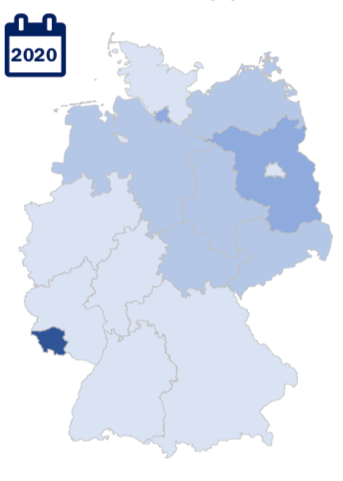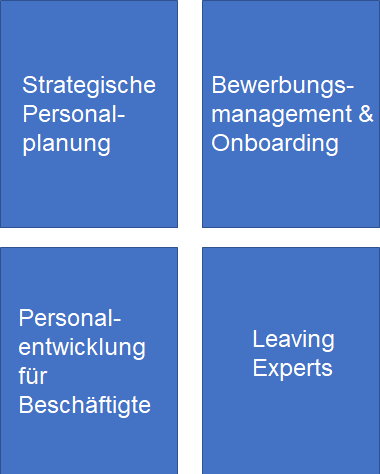No products in the cart.
Archiv

Part-time studies: Not yet established despite record numbers
07 December 2020
On behalf of the CHE Center for Higher Education Development, CHE Consult has been analyzing the development of part-time study programs in Germany on an annual basis since 2016. This year’s edition of the “CHECK – Part-Time Studies in Germany“”, is now available. It covers all part-time study programs offered of the Higher Education Institutions (HEIs) in the country and the demand for these programs students.
About one third of the working population in Germany is employed in part-time positions. In contrast, although the proportion of part-time students has increased to 7.5 percent of the total amount of students enrolled in HEIs, this figure shows that part-time study still far from being an established alternative to conventional, full-time studies. The causes of this lie, on the one hand, in the general framework conditions of the German higher education system and on the other, the limited range of courses offered by HEIs, as a current overview by the CHE Center for Higher Education Development shows.
According to the Federal Statistical Office, 214,000 people in Germany were officially studying part-time in the winter semester of 2018/19. This corresponds to an increase of 11,000 persons in comparison to the previous year. The proportion of part-time students among all students is currently 7.5 percent, higher than ever before.
With 100,000 students, around half of all part-time students are enrolled at a university in the federal state of North Rhine-Westphalia (NRW). However, Hamburg has the highest proportion of part-time students, with one in five studying part-time, ahead of NRW (12.9%).The Saarland comes last in the ranking with 121 official part-time students, which corresponds to a rate of 0.4%.
“Flexible, part-time models in the world of work are now well established. In the areas of academic learning and further education, part-time models are still a long way from being established, despite the record number of part-time students we’re seeing”, said Frank Ziegele, Managing Director of CHE, assessing the current figures. He added that this lack of progress applies in particular to public universities.
About half of all part-time students make use of study opportunities at private universities. Of the 14 institutions with more than 2,000 part-time students, only four are public universities.
In real terms however, the number of “de facto” part-time students is likely to be significantly higher that the numbers suggest, owing to students who are enrolled in a full-time program but study less intensively and therefore longer than planned, explains the CHE.
One of the reasons for the low official figures for part-time students is the poorer financial framework conditions with which part-time students are confronted. “For many students, part-time studies are likely to be significantly more expensive than a full-timeprogram. Every second part-time student falls back on the paid study offers of a private university. In the case of studies at public universities, although they are offered free of charge, the missing BAföG eligibility for part-time students makes itself noticeable”, explains Cort-Denis Hachmeister expert for university access at the CHE.
A further reason for the low official figures might be the low number of part-time courses on offer. According to the data in the HRK Higher Education Compass, only one in every six degree programs in Germany are also open to part-time students. In the current winter semester of 2020/21, the proportion of courses offered on a part-time basis16.1 percent. This represents an increase of 2.2 percentage points in comparison to the previous year.
The Saarland holds the top position in terms of the proportion of courses offered on a part-time basis. Here,two out of three study programs (67.1%) can also be studied part-time. Hamburg and Brandenburg follow with 53.8 and 46.4 percent respectively. In five federal states, the proportion of part-time courses is less than 10 percent. Bremen has the lowest proportion of part-time courses on offer at 2.1 percent.
At 17.2 percent, the range of part-time courses offered at universities is somewhat more extensive than at universities of applied sciences, which only offer 13 percent of their courses on a part-time basis. Master‘s students and people who would like to study parallel to their job also have a greater choice at 19% of the courses offered on a part-time basis in comparison to Bachelor’s courses (14.3%).
In the social sciences, the part-time option exists for every fifth degree program. The lowest percentages are found in agricultural and forestry sciences with 7.7%.
The statistical basis for the part-time option quota cited here is the data of the Hochschulkompass of the German Rectors’ Conference for the winter semester 2020/21. The percentage of part-time students is based on data from the Federal Statistical Office for the winter semester 2018/19.

Application and job interviews online: Success factors and pitfalls
07 December 2020
In the course of the last few weeks, HEIs have been and continue to be confronted with exceptional challenges in their operational processes. This also applies to recruitment and appointment procedures, if these cannot conducted in-person. Currently, various digital formats are being tested. However, digitally mediated discussions and appointment processes are developing their own dynamics. Therefore, technical, organisational as well as psychological aspects must be taken into account in this development process. These topics were discussed by around 45 participants in the second Online-Dialogue of CHE Consult.
The following questions were at the centre of the discussion:
- To what extent are online procedures already being used to select applicants?
- How do the psychological aspects of interaction affect job interviews?
- Will hybrid formats – analogue and digital – be developed for the selection of applicants after Corona?
The discussion kicked off with a presentation by Mrs. Rogalla (Head of the Department of Finance, Human Resources and Communication, Medical Faculty of the OWL, University of Bielefeld) and Prof. Dr. Hauck (Professor of Communication Psychology and Organizational Consulting, Rhine-Waal University of Applied Sciences) on these topics. They also reported on the current state of research as well as practical experiences in the field.
Some aspects of the process would be different with digitally-supported procedures, as compared to analogue formats. For example, the media competence of the applicants is much more apparent in a digital format and has an effect on the overall perception of the candidates. A preliminary assessment of technological competency is also indispensable for a successful interview.
However, there are aspects that have to be considered for both digital and face-to-face interviews. These include ensuring comparability (in terms of form and content), drawing up a competence profile and clearly defining the formal requirements.
For future application and appointment procedures, the two input providers concluded that a dialogue process would now have to be initiated at universities regarding how to take advantage of both variants and develop hybrid processes in line with the motto “Get the best of both worlds!“. There is still one drawback of hybrid formats – while digital formats enable comparability, they do not replace direct and therefore social and interpersonal exchange.
Julia Klingemann, initiator and moderator of the Online Dialogue, expressed her delight at the continued interest in the series and announced that it would be continued: “We are delighted about the large number of participants in our second Online Dialogue. The next Online Dialogues are therefore already being planned and will cover topics such as Virtual and innovative Leadership and On- and Offboarding”.
If you are interested in participating in upcoming exchange formats or have any further comments on the topic, please contact us and send an e-mail to elisa.himbert(at)che-consult.de.
